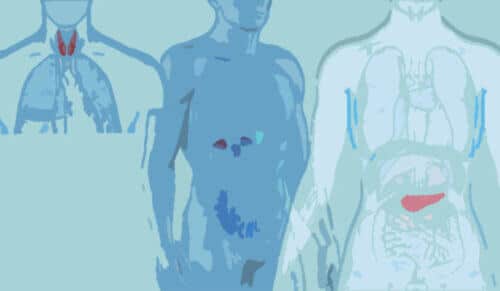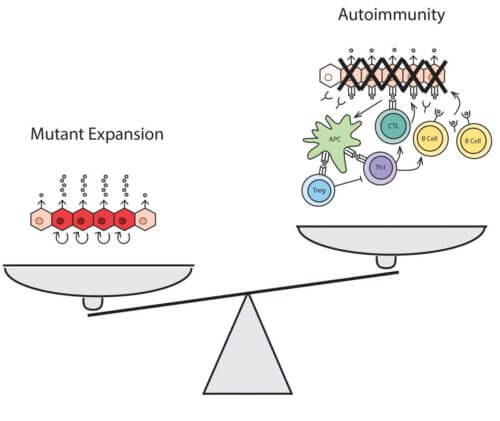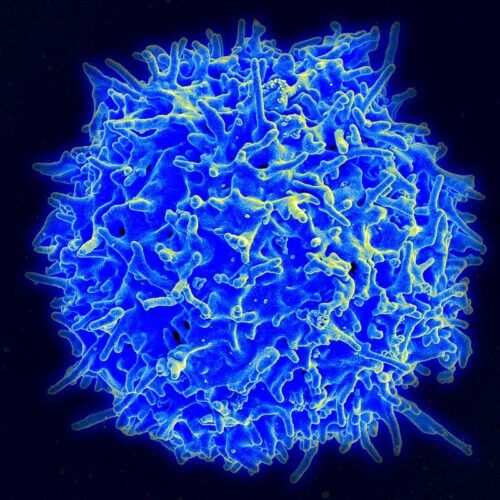A new model explains why the immune system attacks the body's tissues

It is customary to think of autoimmune diseases as an unfortunate case of "the fire of our forces" - an error in identification that causes the immune system to attack healthy tissues instead of outside invaders. According to a new model developed by Weizmann Institute of Science scientists, it may actually be a normal activity of the immune system against "threats from within" - activity that in some cases gets out of control. The new model also offers a solution to a long-standing puzzle: why are certain organs in the body more exposed to autoimmune diseases than others? The findings are published today in the scientific journal Immunity.
Yael Korem-Kohanim, a research student in Prof. Uri Alon's laboratory in the department of molecular cell biology, who led the research, explains that autoimmune diseases are divided into two types - systemic diseases, such as lupus, which attack many organs in the body, and diseases such as type 1 diabetes (juvenile diabetes). , which affect a single organ. One of the open questions regarding the second type of diseases is why certain organs or cells are exposed to autoimmune diseases - while others are almost not at all.
The pancreas is an extreme example of this: the beta cells that produce insulin are damaged at high rates as a result of autoimmune diseases, but they make up only 2-4% of the pancreatic cells, while the rest of its cells are hardly involved in these diseases. Similarly, Hashimoto's disease affects the thyroid gland of approximately 7% of the population, while the adjacent thyroid gland is almost never affected by such an autoimmune disease. What these diseases have in common is that they appear for the first time in children or young adults - unlike genetic diseases that appear at birth or diseases of old age - and they specifically involve the destruction of cells that secrete vital hormones (endocrine cells). In other words, it seems as if one fine day in midlife, the T cells of the immune system mark the endocrine cells as a threat and eliminate them.
And maybe T cells were meant to eliminate these cells in the first place? This was the starting point for Korem-Kohanim's research, with the participation of research student Avihai Tendler and staff scientist Dr. Avi Mayo from Prof. Alon's group, in collaboration with Prof. Nir Friedman's research group from the Department of Immunology.

On the scales of evolution: the risk of developing autoimmune diseases manifested by an undersecretion of hormones (on the right) versus the risk of developing diseases manifested by an oversecretion of hormones (on the left)
Hormones such as insulin, thyroid hormones and cortisol tend to act in "feedback loops": when the demand for the hormone increases, the cells will increase not only the production of the hormone and its secretion, but also the rate of their division - in order to meet the demands over time. Cell division carries risks: mutations will appear in a certain proportion of the new cells. Most mutations are harmless, but when the mutation disrupts the delicate sensing machinery of the cell - the cell may interpret a low demand for the hormone as a high demand. Such an error is fatal: the cell will not only continue to secrete more and more of the hormone, it will also divide again and again and thus produce new cells with the same mutation, which in turn, will divide again and again and produce more and more of the hormone. The result: severe injury to the body.
According to the model developed by the researchers, T cells normally provide a layer of protection designed to ensure that hormone levels in the body are under control. In fact, it can be said that they are entrusted with thwarting "internal terrorism": T cells act as secret agents that eliminate endocrine cells that threaten to take over a certain organ and secrete excessively high amounts of hormone that will endanger life if not stopped in time. In autoimmune diseases, T cells directed to perform this task may become overzealous and eliminate healthy cells as well. In other words, autoimmune diseases are the result of a control layer designed to prevent diseases related to excess production of hormones, while risking the opposite result in some people - reduced production.
But why are certain glands not affected by autoimmune diseases? Did they "give up" the protection of T cells? The thyroid gland, for example, does not tend to be affected by autoimmune diseases, but it is very prone to non-cancerous growths called adenomas, which are common among menopausal women. The adenomas secrete huge amounts of hormone, which cause a harmful overactivity of the thyroid gland (hyperparathyroidism). Other examples, although less dramatic than that of the thyroid gland, have also given support to the idea that the absence of T-cell intervention may indeed cause increased hormone secretion and uncontrolled cell division.

"The model makes it possible to explain some puzzling findings," Korem-Kohanim says. "For example, we examined genetic sequences of T cells found in healthy people, and we saw that some of the cells have exactly the same protein recognition receptors as in T cells from patients with autoimmune diseases. The accepted explanation for this is that healthy people have a mild version of the disease, or a disease in its early stages. But it makes more sense to assume that these T cells should be there; They are designed to prevent excess cell division and excess production of hormones." Korem-Cohenim also says that the model offers a solution to a puzzle that has occupied researchers for a long time, but it is necessary to carry out experiments to examine whether the predictions are realized in practice. However, the model is already attracting interest and is the focus of discussion among leading immunologists. The researchers from Prof. Alon's lab continue to work together with Prof. Friedman's group on means to test the results of the model experimentally.
"We believe that autoimmune diseases do not come from nowhere. Yes, it is a malfunction, but it is a malfunction in a normal and functioning physiological system," says Prof. Alon. "We follow the pioneering works of Prof. Yaron Cohen and Prof. Michal Schwartz and their students from the Weizmann Institute of Science, who emphasized the duality of the immune system which at the same time believes in both caring for our bodies and fighting against invaders from the outside."
More of the topic in Hayadan:
- A new technology for mapping the breakdown products of proteins may lead to the development of new methods for diagnosing autoimmune diseases, cancer and degenerative brain diseases
- A new blood test will detect pancreatic cancer at an early stage
- Why is there a mechanism in healthy cells that allows viruses to multiply and spread themselves?

8 תגובות
The balance of the cells in the body will lead to the cessation of the body's attack on itself! See website https://www.zmedicair.com/
Based on a groundbreaking Israeli development that balances the cells
Eli
I would be happy for one study... it's a field I'm not familiar with
Miracles, I wasn't talking about autoimmune diseases as a result of viruses and/or bacteria, but those that develop in the body with age and the years that are given as an example in the article here (overactivity of the thyroid gland, diabetes, etc.).
The junk that people put in their bodies is the one that causes widespread misery especially among adults and there is no doubt about it, thousands of studies indicate this.
Unfortunately, many foods that we perceive as healthy are actually very harmful to the body and the field of research on AGEs has innovated and proven a lot.
Eli
I prefer in English. In any case - AIDS is not caused by increased consumption of anything... The disease is caused by the HIV virus.
Miracles, I can't upload the links in my reply. The system filters them
In any case, you can go to Google Scholar and search there for AGEs or advanced glycation end product
And you will find countless articles on the subject.
If you want information in Hebrew you can find it on the Klalit website or if you enter in a Google search "not only low sugar" and you will also find a presentation on the subject.
What a beautiful article.
Every now and then I read an article that makes me jealous. I would like to have been there when it was investigated, to participate.
This is one of them. Amazing new knowledge about the human body, about biology.
Thanks.
Eli
Allow link?
The autoimmune diseases appear due to increased consumption of AGEs (endogenous and exogenous) and not by chance! This has already been proven in many studies.